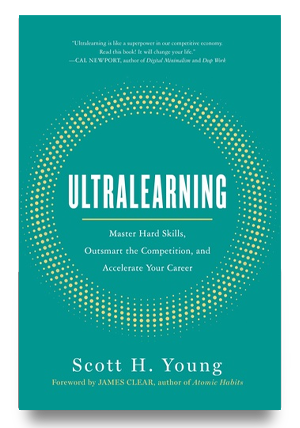Most people don’t quit at the start. Quitting at the start would be a sign of weakness, so you push hard and improve. Instead, most people quit at the plateau. That seemingly impossible barrier, where progress doesn’t happen. During these times conducting a “weak link” analysis and focusing on actions over results to help push me through.
I’ve faced quite a few plateaus. I’m in a couple right now. For almost nine months this website made almost no growth before doubling in traffic and tripling in subscribers in March. During barriers like this it is tempting to doubt yourself, to get jealous of people who are doing better than you, or to give up entirely.
A Plateau is Really a Choice
The start of new ventures are usually marked by small wins. Without any positive encouragement from the beginning, most people quit way before reaching the plateau. During these small wins, hope reigns and nobody questions the decision to go forward.
When you hit the plateau suddenly you are faced with a choice. Often you have little information to decide whether this plateau leads to a higher mountaintop or is impossible to climb. Ultimately it is just a choice you have to make, whether you are going to continue or get down and find a new mountain to climb.
Seth Godin uses a similar concept to a plateau he calls The Dip. His answer to the choice is to ask yourself if this is one pursuit you can become the best at. Have you narrowed down your target so that becoming the best is achievable? But this approach has its flaws. You might become the best at something unimportant. Or your differences with competitors are superficial.
Another way to tackle this choice is that of passion. It is the approach I described in When to Quit where I felt that success mattered less if your passion was great. But that is hardly consolation for the struggling actor who can’t feed his family or the entrepreneur racking up debt trying to launch his business.
In the end it is simply a choice. Plateaus are hard to overcome, not because they require some motivational willpower. They are difficult because the evidence is mixed. Your rational mind realizes there isn’t enough information to adequately decide whether or not you will make it.
I could give some motivational speech about how if you try hard enough you can succeed in spite of all odds. But that would be unhelpful and downright arrogant on my part. Instead, I’d like to offer you a technique I call a “Weak Link” analysis which can give you some ideas to continue the fight.
How a Weak Link Analysis Works
To see how a weak link analysis works, let’s pretend you are running a business, Widgets Inc., that has recently hit a plateau. You manufacture widgets and sell them online to your stable but small supply of widget customers.
Success in the widget industry is based on a number of critical factors: sales, marketing, manufacturing, customer service and product development. Each of these factors is crucial. Without one, the entire business fails. Even if you had perfect sales, marketing, customer service and product development – if your manufacturing didn’t work the company would go bankrupt.
In short, success is based on a multiplication of the critical factors involved in your business:
Success = Marketing * Sales * Customer Service * Manufacturing * Product Development
If each of these five factors of success was only 50% of what it should be, the result would be:
.5 * .5 * .5 * .5 * .5 = .031 = 3.1%
That means even if all of your production areas are “good” you are still only achieving 3% of your possible income if all the critical factors were perfect.
This is, of course, a gross simplification for how a business works. The factors may not have equal weight. Some factors may not kill you if not employed and there may be other factors that, if focused on to near exclusion, could make you be successful.
Those exceptions aren’t nearly as important as the main principle behind it. That many different links contribute to your success, and even if all of them are “good” the end result still means abysmal failure.
**Note: I originally found this concept of multiplying factors written by Steve Pavlina, in his article “Shareware Amateurs VS Shareware Professionals,” but he has since removed the article from the internet**
Applying a Weak Link Analysis
A weak link analysis is simply assessing what your “links” for success are. Then you need to identify the best link to work on if you want to improve. The weak link in this case is the area where the change from good to great would make the biggest difference, the best reinforcement for the chain.
Step One: Find Your Links
The first step is to figure out what your links are. These need to be the critical factors that, if they aren’t working, actively damage your potential for improvement. Four months ago, I did a weak link analysis on my blogging and I identified five major factors that contributed to the growth of my blog:
- Quality
- Quantity
- Technology (social media sites like Digg and other forms of passive marketing)
- Collaboration (interacting with other bloggers and forms of active marketing)
- Monetization (the ability to turn existing traffic into revenues)
Step Two: Find Your Weights
Unlike our simplified Widgets Inc. example, your links aren’t going to be of equal size. One factor may be hundreds of times more important than other factors. You need to weigh each factor to what you believe each contributes to the end result.
Speculating on the exact weight isn’t useful without hard numbers to back it up. Instead, I prefer to simply rank the metrics in the order of their importance:
- Quality
- Quantity
- Collaboration
- Technology
- Monetization
Step Three: Grade Yourself
Once you’ve determined the relative importance of each of these factors, you need to grade yourself on them. Which factors are you excelling in? Which ones are you falling behind? I used the letters A-F to rank my five factors terms of relative success:
- Quality = C
- Quantity = C
- Collaboration = B
- Technology = F
- Monetization = B
Step Four: Finding Your Weak Link
With ordered importance and grades, you now can have a good picture of picking out which area you should be focusing on in the future. Since most of these measurements were estimates in the first place, you shouldn’t give too much to the results of a specific calculation, but here is how you can do it:
Simply multiply the rank by the grade (A=5, B=4, …, F=1). The lowest number would be your weakest link and require the most attention. In my case each link was evaluted to:
- Quality = 1 * 3 = 3
- Quantity = 2 * 3 = 6
- Collaboration = 3 * 4 = 12
- Technology = 4 * 1 = 4
- Monetization = 5 * 4 = 20
So my weakest link was Quality, followed by Technology.
Step Five: Creating a New Project to Tackle the Weak Link
The next step is to engineer a project that will help you improve that weak link. For me that meant spending more time journaling out ideas and working on my writing style. I also spent a lesser amount of time learning about social media sites like Digg and StumbleUpon and researched how to incorporate them into my blog.
If you were trying to get in shape and you believe your weak link is exercising regularly, you could start a 30 Day Trial to make it a habit. If you found that the weak link was snacking, you might empty your house of junk food.
Identifying Weak Links Helps You Ignore the Irrelevant
Sometimes your weak link will be the obvious one, and the analysis will confirm your intuition. But other times it will help you reassess what your priorities are. Plateaus are difficult, primarily because they don’t offer feedback. A weak link analysis can ensure that you don’t focus on minutia or areas of you’ve already perfected.
Nobody can give you the right answer for whether continuing through the plateau is worth it. All I know is that virtually all attempts at major success encounter the plateau and you eventually need to learn to push through. Conducting a weak-link analysis can help you do just that.


 I'm a Wall Street Journal bestselling author, podcast host, computer programmer and an avid reader. Since 2006, I've published weekly essays on this website to help people like you learn and think better. My work has been featured in The New York Times, BBC, TEDx, Pocket, Business Insider and more. I don't promise I have all the answers, just a place to start.
I'm a Wall Street Journal bestselling author, podcast host, computer programmer and an avid reader. Since 2006, I've published weekly essays on this website to help people like you learn and think better. My work has been featured in The New York Times, BBC, TEDx, Pocket, Business Insider and more. I don't promise I have all the answers, just a place to start.